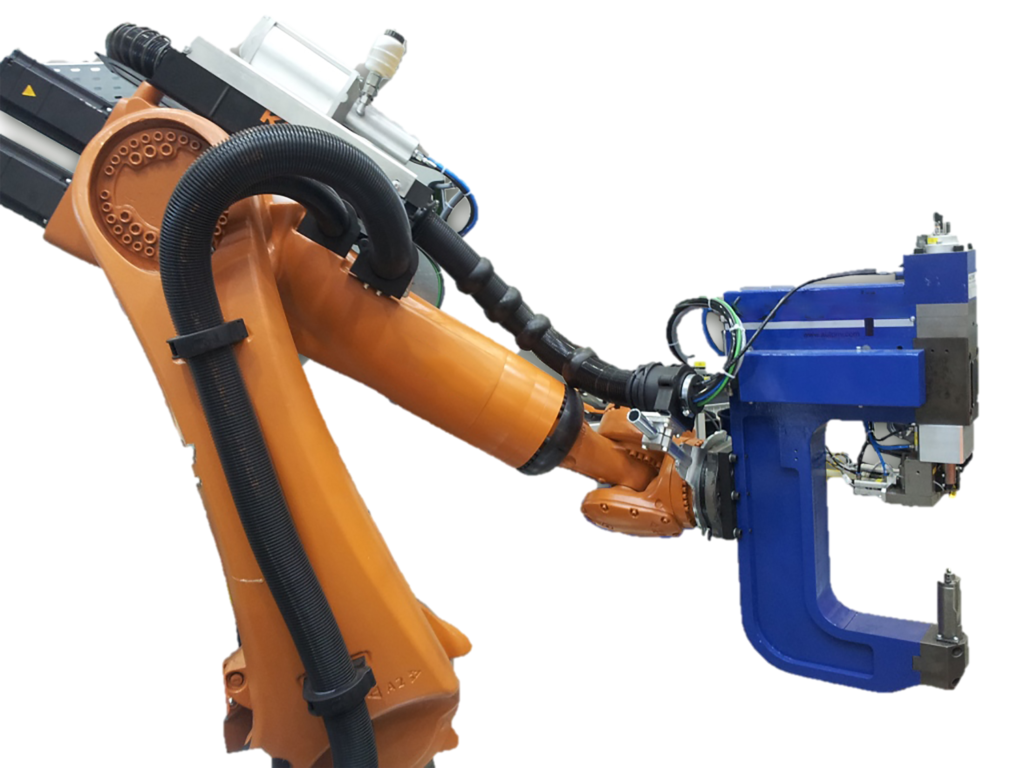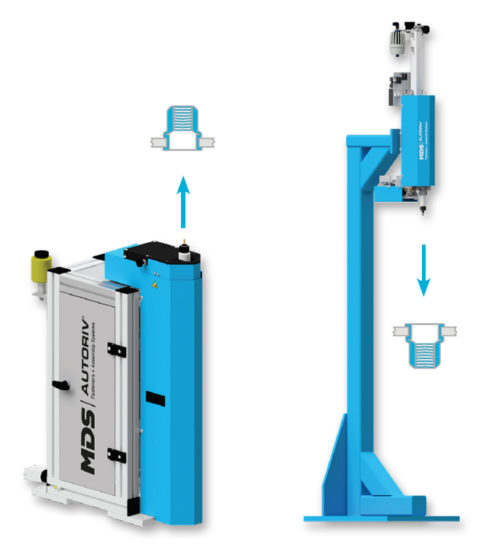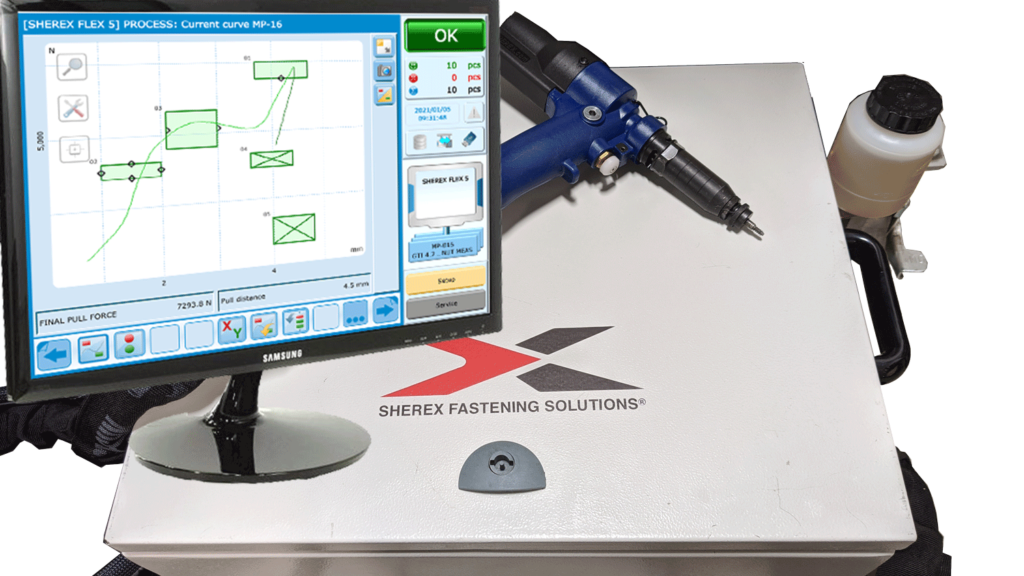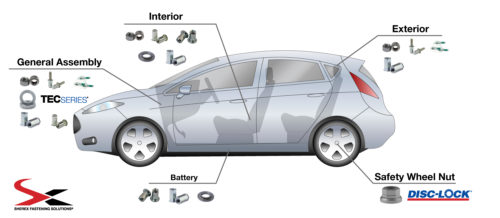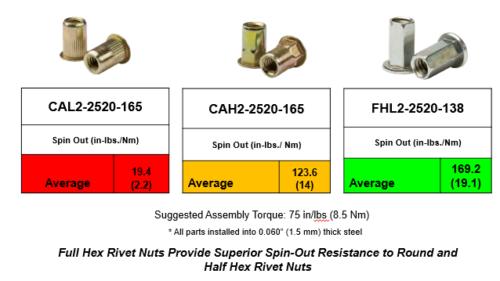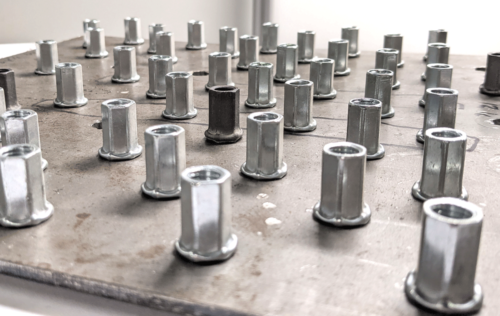The Perfect Workstation for Installing Rivet Nuts
Leave a CommentWhat do you need to be successful at installing rivet nuts? Depends who you ask.
For some, it’s just parts and a rivet nut tool. But it really should be more than that.
Let’s take a look at what every rivet nut installer should have at his or her rivet nut workstation:
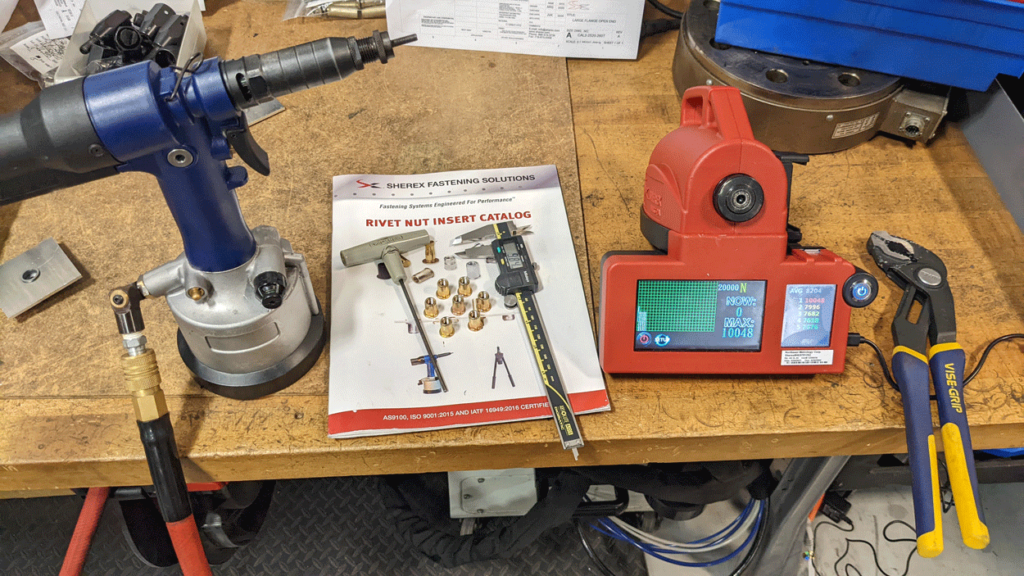
Hand Tool Calibration Unit
Unless you’re installing parts with a process monitoring tool, you need a Hand Tool Calibration Unit. The Hand Tool Calibration Unit shows the pulling force of the rivet nut installation tool, so users know the exact installation force being used to install the part. A dip in pulling force may set the part improperly, leading to rework and time spent fixing parts the user already installed.
Calipers
Every fastener installer needs calipers at their workstation. Calipers are used to measure the dimension and length of an object. This could be the measurement of the hole, or the installed length of the rivet nut. They help ensure the part was installed correctly too.
Rivet Nut Catalog
The rivet nut catalog has loads of information the user may need during their installations. Everything from grip range, installation length, hole size, part number nomenclature and more. It’s a valuable reference to make sure you’re installing the correct part.
Hex Tool
Hex tool is used to increase or decrease the pressure on your hydro-pneumatic rivet nut tool. By using the Hand Tool Calibration Unit to check the pressure, you’ll know whether to turn the pressure up or down on your rivet nut tool.
Vice Grips
Vice Grips are used to install the headset on the Hand Tool Calibration Unit and change the headset on your tooling.
Rivet Nut Tooling
It goes without saying, you need rivet nut tools to install rivet nuts. There are a variety of fastener installation systems you can use, but preferably it would be a hydro-pneumatic tool as it offers fast installation with the ability to spin the part onto the mandrel itself.
Rivet Nuts
Can’t install rivet nuts without… rivet nuts!
The last two items are pretty obvious, but the others are really necessary to ensure a perfect installations. The Cal Unit so you know the pulling force, the calipers to make sure measurements are to spec, Rivet Nut Catalog to see specs of the part you’re installing, hex tool to change the pressure of the tool, and vice grips to change the mandrel of the Cal Unit. Oh, and you know, rivet nuts and rivet nut tool.
All this will make for some successful installations!
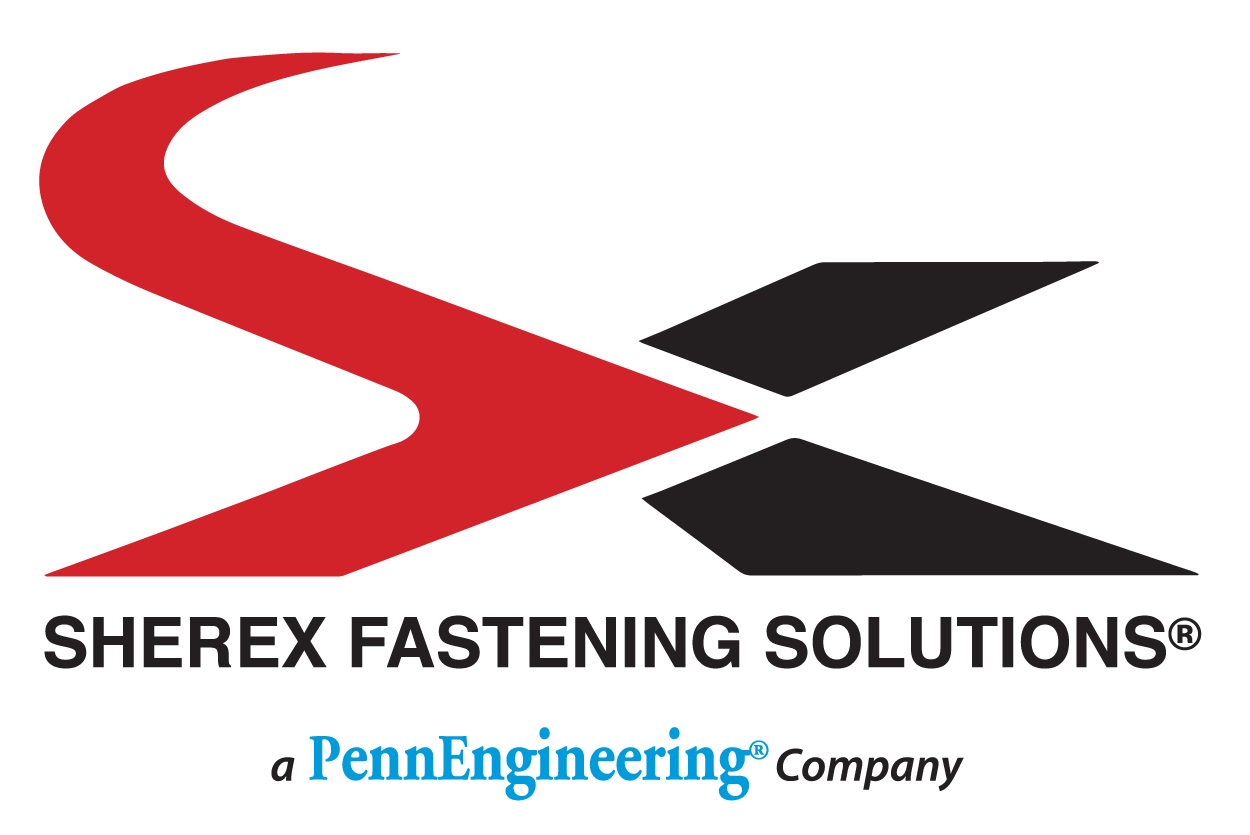





 Sherex makes a variety of
Sherex makes a variety of 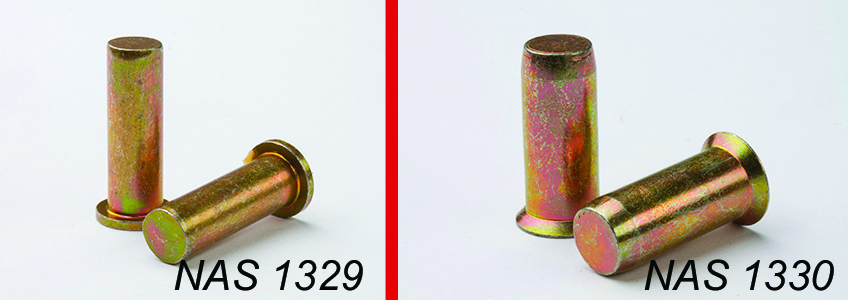
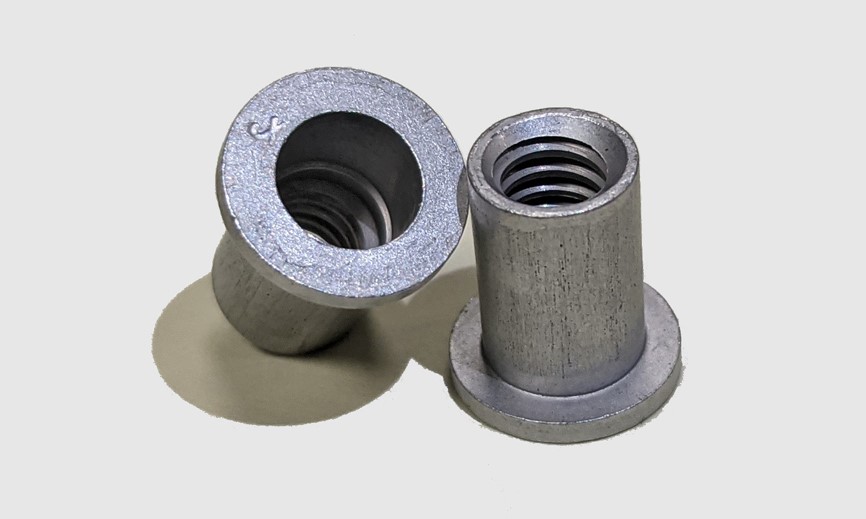


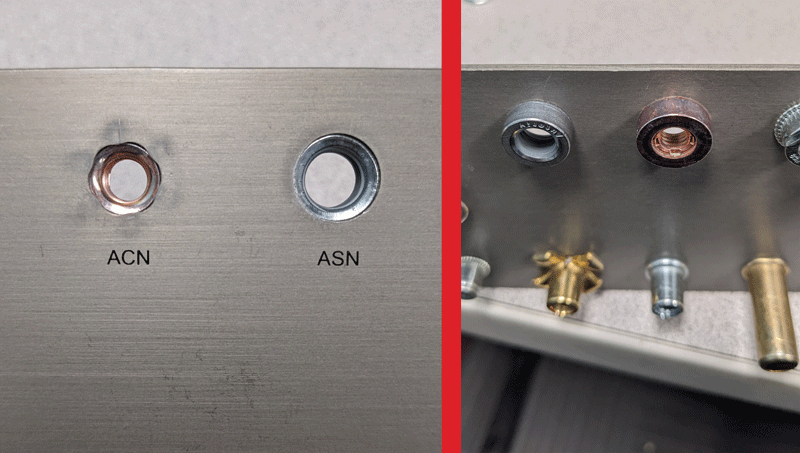

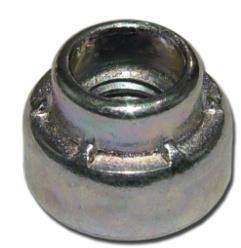
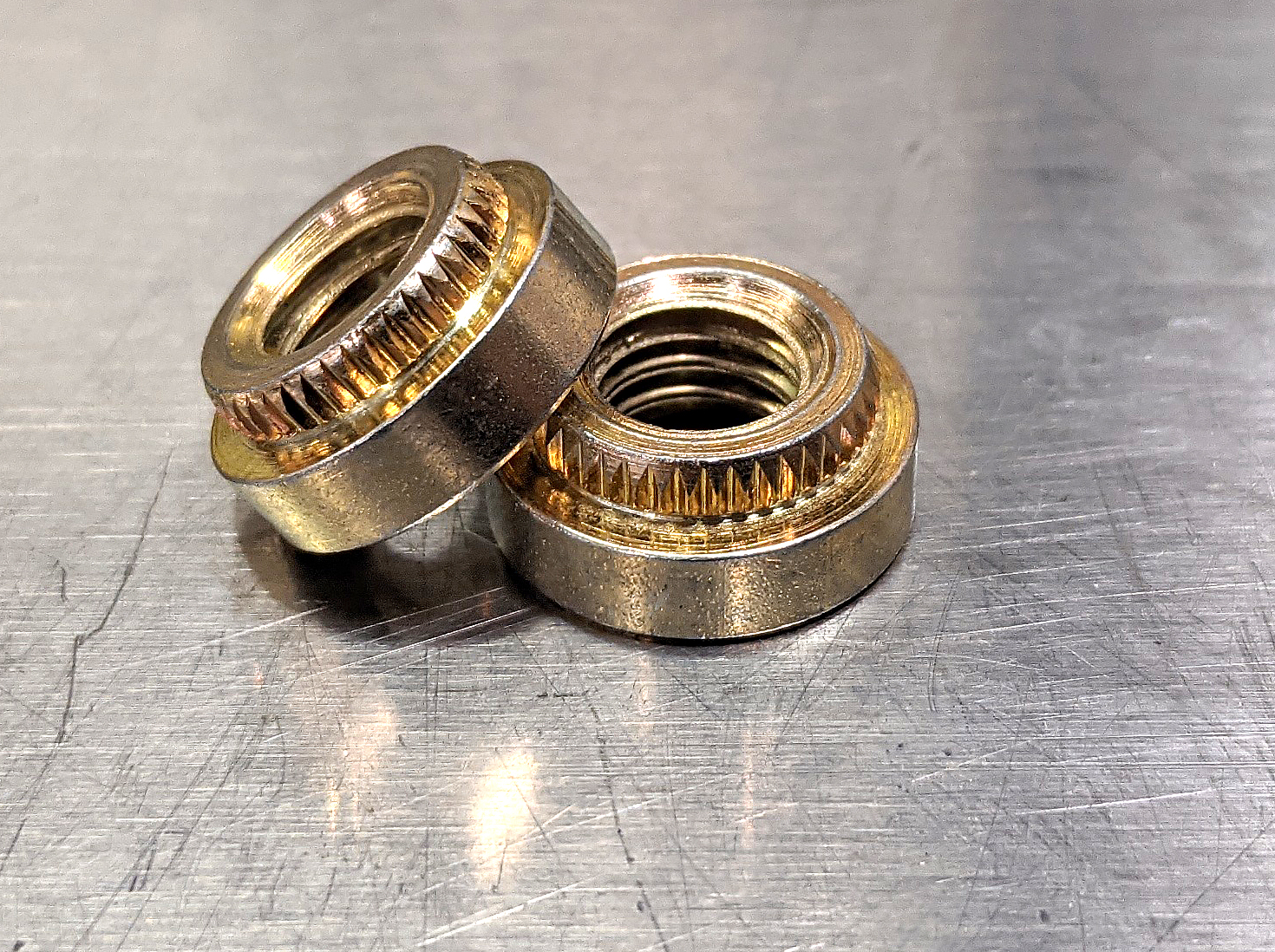 Some projects that require clinch nuts might need a higher tolerance grip range, or something that can bite into the material more, or a different coating. Sherex can design-in and manufacture special clinch nuts for your project. Be sure to look at our post
Some projects that require clinch nuts might need a higher tolerance grip range, or something that can bite into the material more, or a different coating. Sherex can design-in and manufacture special clinch nuts for your project. Be sure to look at our post 

